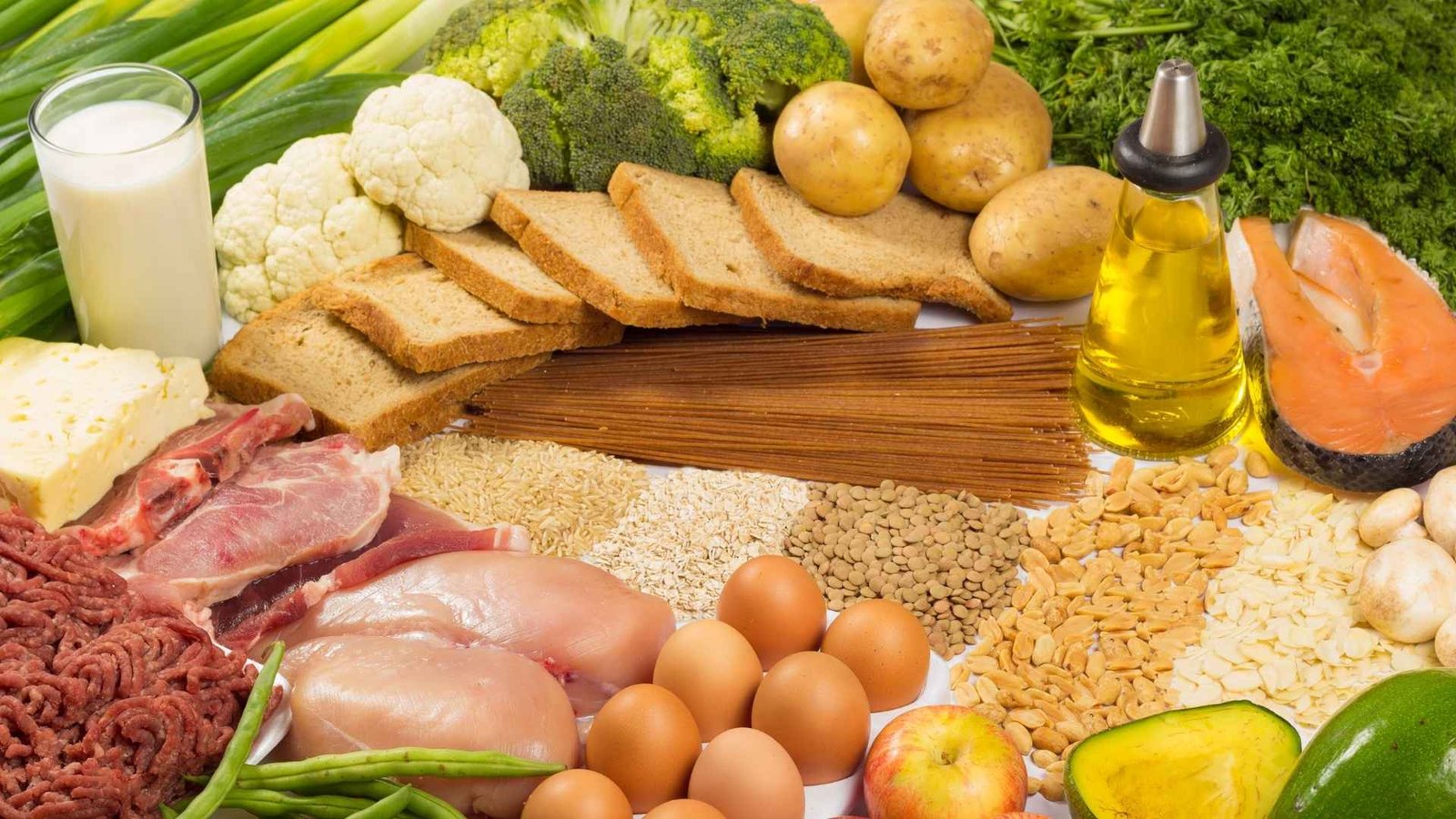Macronutrients are the substances that we need to incorporate through our diet in relatively large quantities to meet the body’s needs. There are three: carbohydrates; proteins and fats.
Micronutrients (also known as oligonutrients) are the substances that we need to incorporate in smaller amounts, but they are still essential for the fulfillment of organic functions. Micronutrients are of two types: vitamins and minerals. See Importance of minerals for your organism, functions of the water-soluble vitamins and functions of the fat-soluble vitamins. Vitamins and minerals mostly fulfill regulatory functions in processes and metabolism.
CARBOHYDRATES
They are responsible for providing energy to the body to carry out the vital functions of metabolism and muscular system. They provide 4 kilocalories per gram. By incorporating carbohydrates into meals, the body can use proteins for other structural functions. Carbohydrates are also part of connective tissue and nervous tissue. There are two types of carbohydrates:
– Simple, refined or ultra-processed carbohydrates are easier to digest and make glucose rise faster and therefore insulin. Ex. refined flours, sodas, sweets, honey, fruits, table sugar. It should be noted that when insulin is triggered, the immune system is decreased as well as the activity of the growth hormone that is responsible for repairing tissues in the body.
– Complex carbohydrates take longer to digest, so they gradually provide glucose to the body. Ex. rice, tubers (potatoes, sweet potatoes), whole grains, legumes (peas, beans and whole grains), vegetables. It’s advisable to consume a greater amount of complex carbohydrates instead of simple carbohydrates.
PROTEINS
They are made up of chains of amino acids, they are plastic nutrients, they mainly form the structures of different organs and tissues. We detail all the functions that proteins fulfill:
– They are necessary for the growth, maintenance and repair of tissues, including cartilage and muscle mass.
– They help in the wound healing process.
– They are important in the formation of collagen that allows healthy skin and hair.
– They are involved in the production of enzymes that participate in various chemical reactions of the body.
– They are essential in the production of antibodies, immunoglobulins locate and destroy cells that cause infection or intoxication.
– They participate in the production of hormones such as growth hormone, and insulin that serves to metabolize carbohydrates.
– It’s involved in the formation of neurotransmitters such as adrenaline and acetylcholine.
– When the ingestion of carbohydrates and lipids is insufficient, the body will use proteins to produce energy (4 kilocalories per gram of protein) for which it also fulfills an energetic function.
– It’s involved in the transport of oxygen to cells, as well as lipids, vitamins and minerals.
– They keep the blood pH at adequate levels.
There are two types of proteins: of high biological value / complete (of animal origin) and of low biological value / incomplete (of vegetable origin). The difference is that complete ones have all the essential amino acids while incomplete ones lack one or two essential amino acids. Essential amino acids are those that the body does not generate, which is why they must be incorporated through food. Amino acids not used to repair tissues, or as energy, are not stored in this way, they are converted into fat or eliminated through urine (urea, creatinine and uric acid), feces, sweat and peeling of skin, hair and nails.
– Protein sources of high biological value: Red and white meats, beef, chicken, pork, fish, eggs, dairy products and their derivatives.
– Low biological value protein sources: Lentils, beans, peas, pumpkin seeds, sunflower, wheat germ, wheat bran, oats, beans, nuts, peanuts, peanut butter, almonds, pistachios, cashews, walnuts, hazelnuts, pine nuts, chickpeas, rice, couscous, soy (fresh, dry, flour, tofu, miso), quinoa, amaranth, lupines, seitan (made with wheat germ), sesame, flax, spirulina (seaweed), Brussell sprouts, broccoli. Although these foods do not contain all the essential amino acids, their combination covers the body’s protein needs.
Lack of protein can lead to malnutrition and excess, to dehydration, calciuria (elimination of calcium in the urine), lack of appetite, overload of the liver and kidneys. One gram of protein should be ingested per kilo of weight. Ex. a person weighing 65 kilos, should eat 65 grams of protein per day.
LIPIDS
They are both energetic and plastic, they contain twice the energy intake of carbohydrates (9 kilocalories per gram). They are important because they include the fat-soluble vitamins A, D, E, and K. Fatty acids are used for tissue growth and restoration. Those that are not used are stored in the form of fat that serves to maintain body temperature.
There are two types of fats:
– Saturated fats: They are generally of animal origin but can be found in the vegetable kingdom such as coconut oil, palm oil and cocoa. They are found in nature in solid form, have a lower smoke point, a high content of cholesterol and fatty acids. Eg butter, milk, cream, beef fat, chicken skin, pork fat, lamb, egg yolk, organ meats, cold cuts and sausages.
– Mono and polyunsaturated fats: Of vegetable origin, they are found in nature in liquid form, they have a higher smoke point and are therefore more suitable for frying. Eg Monounsaturated: Olive oil, nuts, avocado, olives. Polyunsaturated, they are divided into two groups: a) Omega 6 (seeds, grains and their derivatives such as vegetable oils) / b) Omega 3 (present in soybeans, nuts, fish and shellfish).
– Trans fats: To produce certain foods the industry, hydrogenated liquid vegetable oils to make them semi-solid and stabilize them. In this way, polyunsaturated fatty acids are converted into monounsaturated and saturated fatty acids (margarine, cookies).
It’s recommended that fats are a maximum of 30% of the total calories ingested and that only 10% of this total are saturated fat.
FOOD FIBER
Fiber is a mixture of polysaccharides that are not digestible by humans, but which has the function of helping to reduce the time of intestinal transit. Fibers are positive in several ways:
– Fight constipation
– They provide satiety
– Lower blood cholesterol
– Lower blood glucose levels
– They have a prebiotic effect, which is why they help improve the immune system
– They improve the absorption of calcium, iron and other nutrients
Fiber sources: Wheat bran, whole grains, oats and oat bran, cabbage, Brussels sprouts, green beans, root vegetables, edible peels, fruits, legumes, beans, eggplant, tomato, zucchini, pumpkin, carrot, beet, artichoke, asparagus, heart of palm, apple, pear, peach, apricot, banana, citrus, quince.




